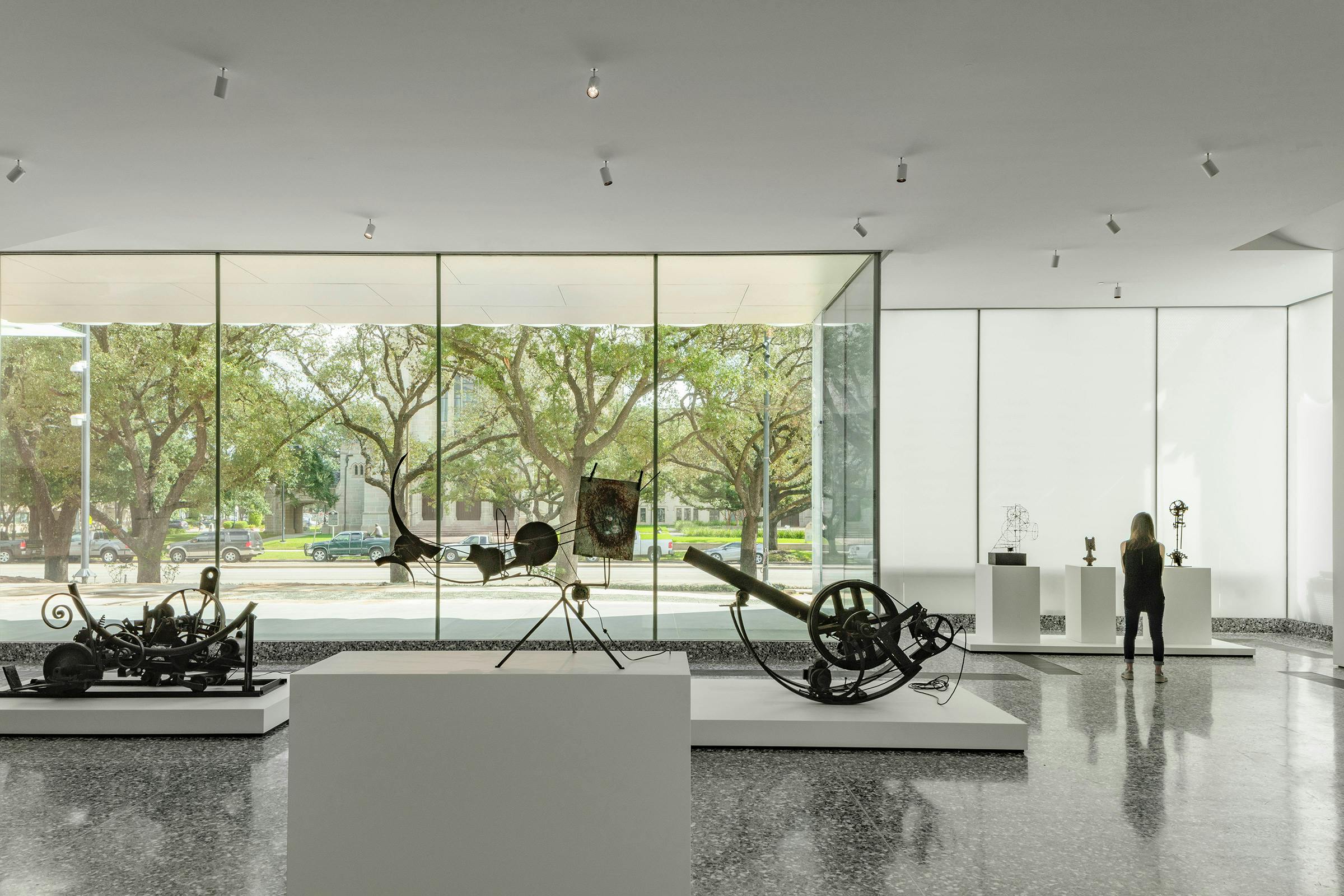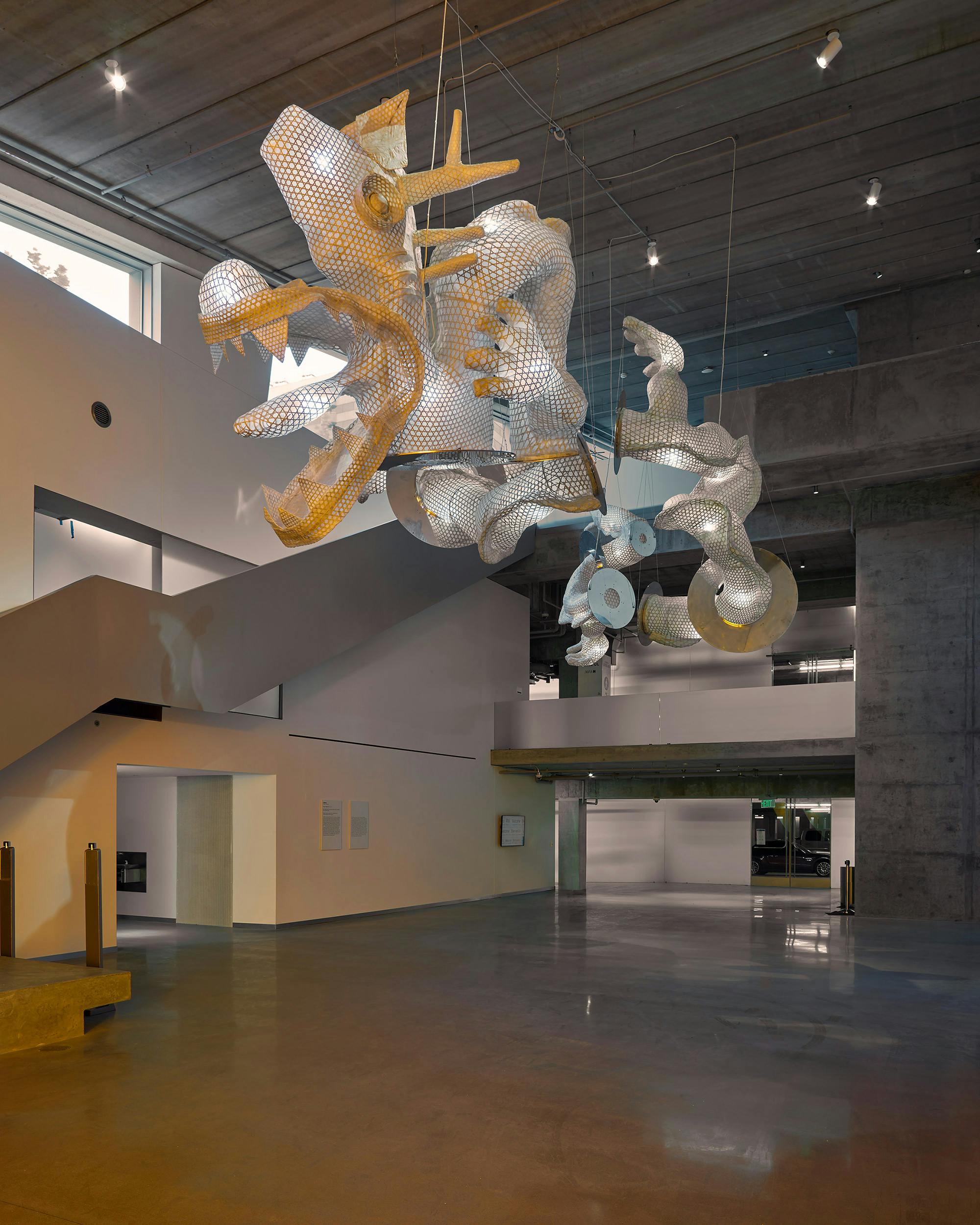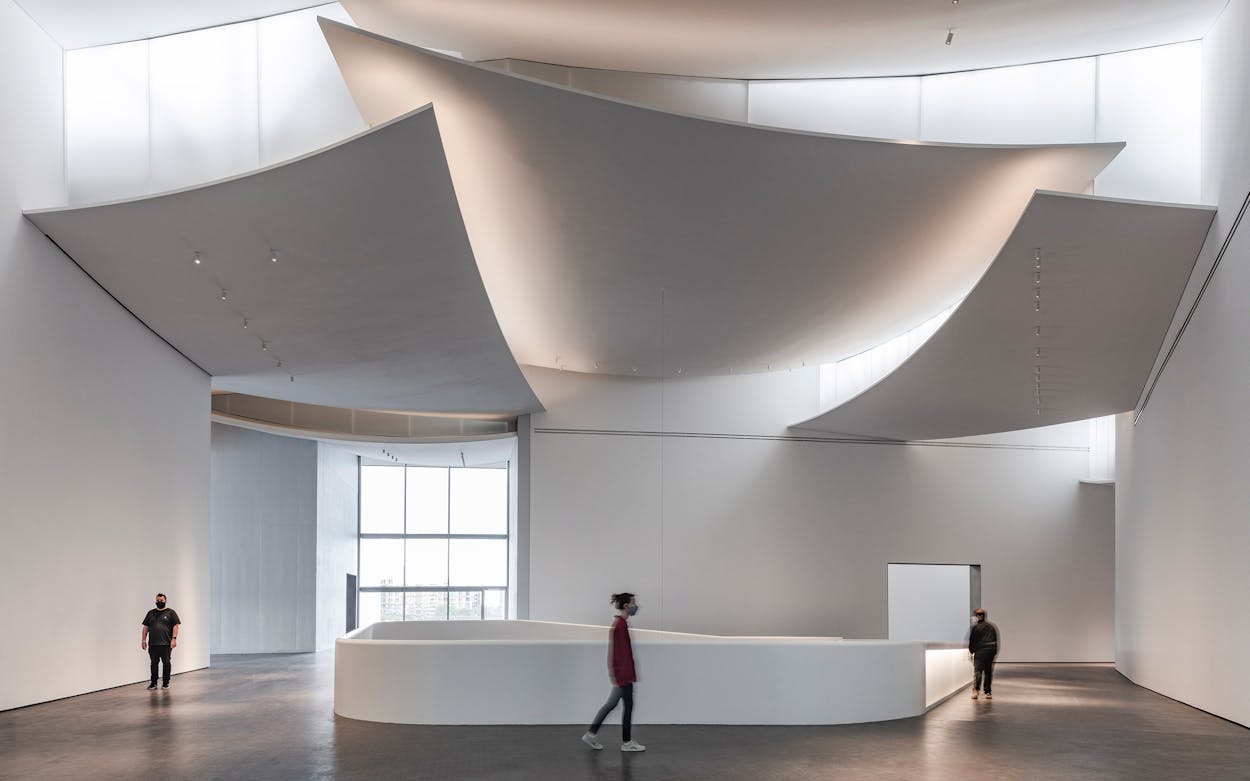When Houston philanthropist Caroline Wiess Law died on her eighty-fifth birthday, on Christmas Eve, 2003, she left her collection of twentieth-century paintings—including masterpieces by Willem de Kooning, Joan Miró, and Andy Warhol—to the Museum of Fine Arts, Houston, where she had served on the board of trustees. Law also willed the bulk of her estate, a sum of about $450 million, to the MFAH in one of the largest gifts ever made to an American art museum. The cash infusion allowed the institution to go on an epic acquisition spree for modern and contemporary art, adding about two thousand new pieces to its collection, including major works by Richard Avedon, Fernand Léger, Martin Puryear, Doris Salcedo, and Kara Walker.
But a problem quickly surfaced: there was nowhere to hang the new art. The Audrey Jones Beck Building had opened in 2000 across Main Street from the MFAH’s original building, doubling the museum’s gallery space. But even before the Law bequest it was clear to museum staff that another expansion would soon be necessary.
After two decades of planning, fund-raising, and construction, that long-anticipated showcase for modern art will finally open to the public this weekend. The 237,000-square-foot Nancy and Rich Kinder Building (named for the Houston couple who donated $75 million for the project) is the final puzzle piece in the MFAH’s half-billion-dollar expansion plan, which also includes a new building for the Glassell School of Art, a new conservation lab, two underground parking garages, and a pedestrian tunnel underneath Bissonnet Street connecting the Kinder building to the Mies van der Rohe–designed Caroline Wiess Law Building, which houses the museum’s collections of African, Asian, Islamic, and pre-Columbian art.
Even before opening its doors, the Kinder building has established itself as a Houston architectural landmark. Structurally, the building resembles a six-legged starfish, with stubby, irregularly shaped limbs protruding from the main body. It’s not uncommon for passing motorists to do double takes, especially at night, when the building glows from within like an alien spacecraft about to take off. The effect was conjured by New York–based architect Steven Holl, who also designed the new, L-shaped Glassell building. It was Holl’s idea to wrap the Kinder building in a vertical array of translucent glass cylinders. These tubelike structures, each nearly a foot in diameter, are both functional and decorative; during the day, they conserve energy by trapping heat, while at night they light up like a supersized Dan Flavin sculpture. (Holl cites Flavin and light artist James Turrell as two of his artistic influences for the building.)

In 2012, the MFAH held a competition to name the designer of its new building. Holl, a pioneer in energy-efficient architecture, won by ignoring the rules of the contest completely. “The brief called for building a seven-story parking garage right behind the existing Glassell building,” he says. “The other two architects [among the three firms named as finalists], Morphosis and Snøhetta, did that. And we said. ‘No, that’s not a good plan,’ because it blocks your possibility to ever expand as a campus in the future.” Instead, Holl proposed demolishing the existing Glassell building, adding an underground parking garage, then constructing a larger, modernized home for the art school on top. Holl’s pitch was so compelling that it convinced the MFAH, which hadn’t originally planned on replacing the Glassell building, to come up with the money to realize his vision.
Holl’s initial plans for the Kinder building included, beyond cladding the building in glass tubes, a translucent roof that he called a “luminous canopy.” The swooping, scalloped roof—designed, Holl says, to look as if it had been carved by low-hanging clouds—would disperse natural light through the galleries in the daytime and illuminate at night. This sense of porosity to light, to air, and to human movement is a leitmotif of Holl’s buildings around the world, such as MIT’s Simmons Hall and an addition to the Nelson-Atkins Museum of Art in Kansas City.
With its ground floor surrounded by seven gardens and six reflecting pools, and an indoor/outdoor restaurant abutting the Isamu Noguchi–designed Cullen Sculpture Garden, the Kinder building breaks down the barrier between interior and exterior exhibition spaces, inviting visitors to meander through the grounds rather than herding them along a predetermined path. Visitors can commune with artworks at their own pace, and in their own order. “No building should be longer than a New York city block,” Holl says. “You should be able to go through it. It should have a relationship to the outside.”

With six buildings spread over fourteen acres and divided by busy roadways, the MFAH has never felt like a campus the way the nearby Menil Collection does. But Holl and the landscape architecture firm Deborah Nevins & Associates have done their best to stitch together the museum’s different elements to form a cohesive space. “When I first got there two years ago, it took me a while to realize that the Beck building and the Law building were the same institution,” Nevins says. To encourage more foot traffic, Nevins’s firm constructed a new public plaza outside the Glassell School of Art, anchored by Anish Kapoor’s monumental “Cloud Column” sculpture (a cousin of Kapoor’s famous “Cloud Gate” in Chicago’s Millennium Park). She also designed the new Glassell’s green roof, a gently sloping, walkable garden that has become one of Houston’s selfie hot spots.
Some buildings dazzle with their exteriors only to disappoint the visitor with ho-hum interior spaces. That’s not the case with the Kinder building, which is organized around a soaring, three-story atrium flooded with natural light from Holl’s translucent roof. Each floor features galleries branching off from the atrium, much like Frank Lloyd Wright’s Guggenheim Museum, an obvious influence on Holl’s design. When I visited the museum in September, some workers were on their hands and knees, polishing the building’s handsome terrazzo floors, while others stood on stepladders applying final coats of paint to the immaculate white walls. In the galleries, installers were hanging paintings from the MFAH’s collection, some of them familiar, others never previously exhibited.
The MFAH boasts an outstanding collection of Latin American modern and contemporary art, thanks largely to curator Mari Carmen Ramírez, and has significantly expanded its collection of non-Western art in recent years. The eight site-specific works commissioned for the Kinder building give a sense of the curators’ global outlook: a tapestry by El Anatsui (Ghanian-Nigerian), a hanging sculpture resembling a deconstructed dragon by Ai Weiwei (Chinese), and a light installation by Ólafur Elíasson (Danish-Icelandic), among others. The galleries will also feature the creations of several Texas artists, including a newly commissioned tapestry from Houston’s Trenton Doyle Hancock and works from the permanent collection by Forrest Bess, John Biggers, and Dorothy Hood.

Rather than telling an all-too-familiar story about the development of twentieth-century art, using representative works by the same all-too-familiar names, the MFAH wants to broaden the conversation in all directions—by including more art by women, people of color, and international artists, alongside plenty of stalwarts. With the concept of a “Western canon” having long been discredited among art historians, the MFAH’s curators have the freedom to pair one of Jean Tinguely’s kinetic sculptures with a mixed-media work by Venezuelan artist Jesús Rafael Soto, as they do in one of the building’s ground-level galleries. “One advantage of not having the canon is that we don’t have to disrupt it,” says MFAH director Gary Tinterow, who helped choose the Holl design in 2012 and has closely supervised every detail of the construction. “We’re just starting with what we have and telling the most interesting stories we can.”
For Alison de Lima Greene, an internationally respected curator of modern and contemporary art who has worked at the MFAH since 1984, the Kinder building is the realization of a long-held dream. For decades, she used a “memory palace” to keep track of the thousands of works in the museum’s ever-growing collection, and to imagine how they might one day be exhibited. “I didn’t always know what the building would look like or what the configuration would be,” she says. “But I kept thinking about, you know, what could we do?”
After closing for two months at the beginning of the pandemic, the MFAH reopened in May with limited attendance and social distancing requirements. Museum attendance remains severely depressed; curators hope the Kinder building’s grand opening will lure Houstonians back. Admission to the entire museum is free this weekend, and the new building will remain free to tour through November 25. “I believe so passionately in the power of art,” Greene says. “I think that when the building opens, we’re going to offer Houston a path forward”—spiritually speaking, of course.








